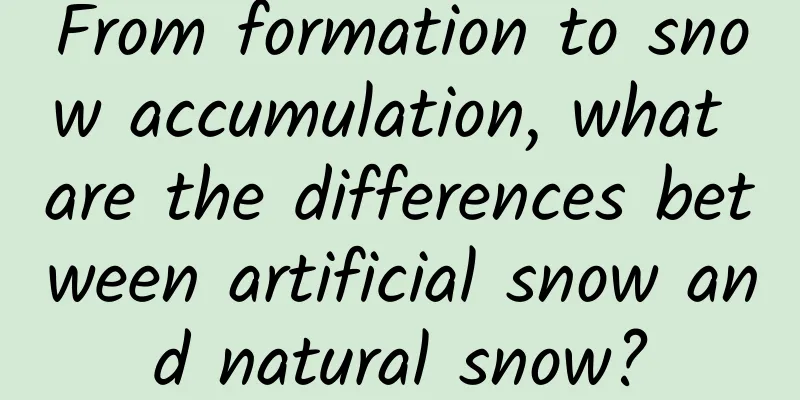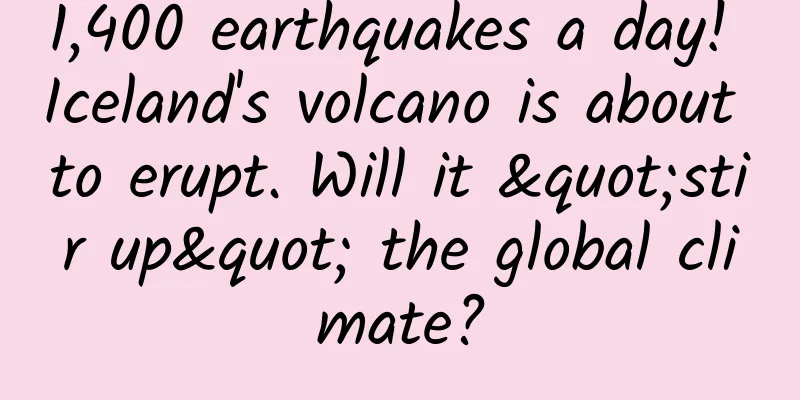From formation to snow accumulation, what are the differences between artificial snow and natural snow?

|
Ice and snow sports are becoming more and more popular, and the ski slopes in the ski resorts that everyone often goes to are basically made of artificial snow. When you see "snow cannons" and "snow guns" spraying snow, have you ever wondered how they make snow? What is the difference between artificial snow and natural snow, and what is the difference in their state after falling to the ground? The "snow cannon" in operation (Photo credit: Shougang Ski Jump venue operation team) Part 1 Natural snow: the crystallization of water and dust To talk about artificial snow, let’s first look at natural snow. Snow in nature is solid precipitation formed by the condensation of water vapor in the atmosphere. Its structure changes with temperature and humidity and is mostly hexagonal. Part 2 So, how are natural snowflakes formed? Under certain temperature conditions, the water vapor content in the air reaches the maximum limit, and the different phases of water (solid, liquid, gas) can be transformed into each other. When the temperature drops, the saturated water vapor becomes supersaturated, and they are very easy to condense on the suspended dust and form ice crystals. After that, the ice crystals continue to absorb surrounding water vapor and grow larger, while the water vapor near the ice crystals continues to decrease. In this way, the water vapor density near the ice crystals is lower than that far away from them, resulting in a relatively high water vapor pressure gradient. Driven by the gradient pressure, water vapor gradually moves from around the ice crystals to where the ice crystals are located. The moving water vapor molecules first encounter the corners and protrusions of the ice crystals, where they condense and become part of the ice crystals. In this way, the edges of the ice crystals continue to grow and gradually become branch-shaped. Later, due to the same mechanism, new small branches grow at each branch and edge, and star-shaped snowflakes gradually form. The formation process of star-shaped snowflakes (Image source: self-made by the author) Because the temperature and humidity conditions of ice crystals in the atmosphere are constantly changing, the growth rates of various parts on the surface, edges and corners of ice crystals are inconsistent. If water vapor condenses only on the surface of ice crystals, columnar snowflakes are formed; if water vapor condenses on the edges and surfaces of ice crystals, flake snowflakes are formed; if water vapor condenses on the surface, edges and corners of ice crystals, and the sharp corners are prominent, the condensation grows fastest, and the snowflakes are mostly branched or star-shaped. Therefore, due to the constant changes in the temperature and humidity of the atmosphere, snowflakes present ever-changing forms. Snowflakes of exactly the same shape and size or completely symmetrical cannot be formed in nature. Typical columnar, flake and star-shaped snowflakes (Image source: self-made by the author) Part 3 Artificial snow: ice crystals “created” Compared with the ever-changing natural snowflakes, artificial snow is mostly carved out of the same mold. Common artificial snow is made by mixing high-pressure water from a high-pressure water pump and high-pressure air from an air compressor and spraying them out at a double-inlet nozzle. The high-pressure air then divides the water into tiny particles. These particles will solidify into ice crystals in the cold air, and further contact with water vapor will allow the crystals to grow. Since there is not enough time and space for ice crystals to develop and grow, artificial snow is mostly white, opaque, and nearly spherical or conical, and it is difficult to form star-shaped or multi-branched shapes. In a narrow sense, this kind of artificial snow belongs to sleet (pronounced xian, fourth tone; also known as snow balls, with a diameter generally between 0.3 and 2.5 mm, produced in strong atmospheric convection and in strongly disturbed clouds), and does not belong to the category of snow. Artificial snow similar to graupel (Image source: homemade by the author) Another type of artificial snow is to use an ice-making device to make flake ice from water, then use an ice-crushing device to crush the flake ice into powder, and finally send the powdered ice crystals out through an air delivery system. On January 16, 2022, Genting Snow Park was carrying out snowmaking work (Photo source: People's Vision, photo by Hu Wang) Compared with the complex and long growth process of natural snow, artificial snow is like being "brought to life". However, both artificial and natural snow are actually solid forms of water. The snow in winter is a solid water reservoir of the earth, which can melt and nourish all things when the spring comes. Artificial snow is a supplement to the "solid water reservoir" in winter. In years with little snowfall, an appropriate amount of artificial snow can help reduce spring drought and benefit life. Therefore, if you think that artificial snow wastes water resources and affects the ecological environment and water safety, it is actually groundless. Snow is a solid reservoir that nourishes all things (Image source: self-made by the author) Part 4 Do snowflakes change when they fall and pile up on the ground? After the natural snowflakes fall, the mutual squeezing between the snowflakes, the erosion by the wind, and the exposure to sunlight will wear off their branches and corners, and the snowflakes will break into tiny ice crystals. After isothermal metamorphism in a low-temperature environment, they will eventually become rounded snow crystals with a diameter of less than 0.5 mm and are approximately round. As the thickness of the snow increases, the temperature inside the ski resort shows a significant gradient change, and the temperature difference between day and night causes the direction of the snow temperature gradient to change. The temperature gradient drives the free water vapor in the snow to move upward and downward. During the migration process, water vapor will adhere to the rounded snow crystals, causing them to change into polyhedral snow crystals of various shapes with diameters ranging from 1 to 3 mm. Adjacent polyhedral snow crystals will also be sintered together by free water vapor, just like electric welding iron plates together, eventually forming a polyhedral snow crystal chain. Chain of polyhedral snow crystals (Image source: self-made by the author) Then, due to the insulation effect of a certain thickness of snow, the temperature at the bottom of the snow tends to be constant and is always higher than the temperature on the surface of the snow. The temperature gradient is stable, and the direction of water vapor migration is unified. Water vapor continues to adhere to the polyhedral snow crystals in the same direction, so the snow crystal particles gradually become larger and form snow crystals of various regular shapes such as maze, agate, pyramid and diamond. Deep frost snow crystals (Image source: self-made by the author) Due to the different snow particle settling times and the different development levels of snow crystals, the snow crystal particles and sizes also form obvious differences. Therefore, the snow profile shows a clear layered structure, from top to bottom, there are rounded snow crystals, multi-faceted snow crystals, and deep frost. An idealized natural snow grain development and metamorphism process from the initial landing to the melting is: snow crystal sedimentation - snow crystal rounding under isothermal metamorphism - snow crystal polyhedronization under gradothermal metamorphism. In the same space, due to the large differences in the landing time, pressure, temperature gradient, etc. of snow crystals in different snow layers in the snow accumulation, the development degree of different snow crystals is also different, and the crystal types are obviously different. Snow crystal types in each layer of the snow profile in midwinter (Image source: self-made by the author) So, what are the differences between snow formed by natural snow and artificial snow? Because natural snowflakes are flat and intertwined with each other after falling to the ground, the accumulated snow has high porosity, low density (the density of natural new snow is between 0.05 and 0.15 grams per cubic centimeter), low hardness, and is very soft; while artificial snow is dense crystals that are approximately spherical or conical in shape. The accumulated snow has low porosity and high density (the density of artificial snow is higher than 0.5 grams per cubic centimeter), and its mechanical properties such as hardness and strength are much higher than those of natural snow. In addition, compared with natural snow, artificial snow has a single crystal type, the stratification is not obvious in the same ski resort, the crystals develop and deteriorate slowly, it is difficult to form polyhedral snow crystals and deep frost snow crystals, and the properties are single and stable. While we are enjoying ice and snow sports, we might as well touch the artificial snow up close while ensuring safety. Technology is all around you and me. References: 1. Libbrecht, K. The snowflake[M]. Voyageur Press, 2003. 2. Shan Shuhua. Differences between sleet and sleet[J]. Meteorology, 1990(12):50-51. 3. Marbouty D. An experimental study of temperature-gradient metamorphism[J]. Journal of Glaciology, 1980, 26(94): 303-312. 4. Simpkins G. Snow-related water woes[J]. Nature Climate Change, 2018, 8(11): 945-945. Produced by: Science Popularization China Produced by: Hao Jiansheng Producer: Computer Network Information Center, Chinese Academy of Sciences (The images with source indicated in this article have been authorized) The article only represents the author's views and does not represent the position of China Science Expo This article was first published in China Science Expo (kepubolan) Please indicate the source of the public account when reprinting China Science Expo |
<<: How outrageous are the cultural relics dug out from the ground? I was shocked by the tiger alone
>>: Auntie Wang fried prawns and almost burned her house! How to fry frozen food?
Recommend
“BabyTree” user growth case analysis!
Against the backdrop of the gradual decline of tr...
Zhang Xiaolong said WeChat is "decentralized". Is this a good idea?
At yesterday's WeChat open class, Zhang Xiaol...
Please parents, stop doing this! These 5 habits are really dangerous
When cooking, wait until the oil starts to smoke ...
How to use promotional coupons to get the maximum conversion?
Coupons are rarely missed in any activities among...
This stone forest is a bit strange: Three Ordovician stone forests in my country
In the Karst Grand View Garden, Stone Forest is a...
Acne-prone skin! Are acne patches just a waste of money or a magical tool? ?
Eating hotpot, drinking milk tea, staying up late...
Changde SEO Training: How to solve the problem of unstable website ranking? Factors that affect the instability of website SEO keyword rankings
What should I do if the website keyword ranking i...
How to play with Tik Tok splash screen ads? Here’s a set of “Douyin” marketing techniques for you!
There is no doubt that TikTok has become a social...
Apple App Store data report: Why do taxi apps frequently fail to appear on the list?
It has been more than a week since the Didi Chuxi...
Underwater Archaeology: A Whisper Across Time
Produced by: Science Popularization China Author:...
Jian Qi's "32 Simple Financial Management Lessons" helps you make money from money
Jian Qi's "32 Minimalist Financial Manag...
Do you know these 4 points about Tencent social advertising?
Do you know all this about Tencent social adverti...
The internet-famous wolf in Kekexili was hit and killed by a car? This may be due to feeding
This Monday, many netizens posted on social media...
How to activate a “professional account” on Xiaohongshu? Here is a guide for you to start
Today, Xiaohongshu adjusted its account system an...
A complete and effective event planning plan!
Event planning refers to the planning of differen...







![[Li Jiaoshou] How to conduct consumer research without a large budget?](/upload/images/67cc39c0bf80e.webp)

